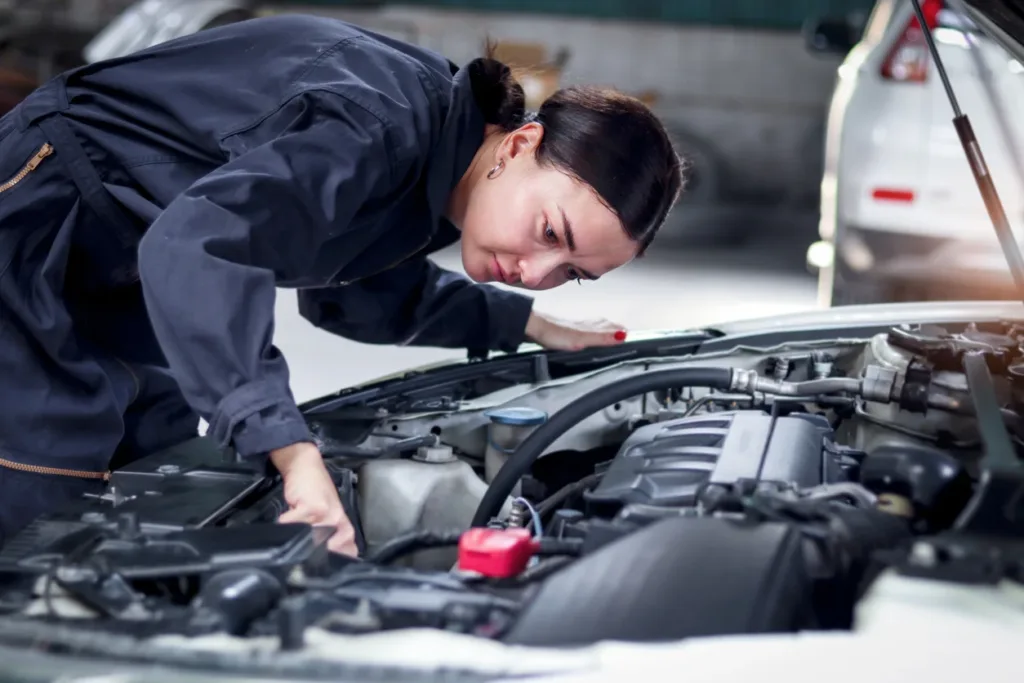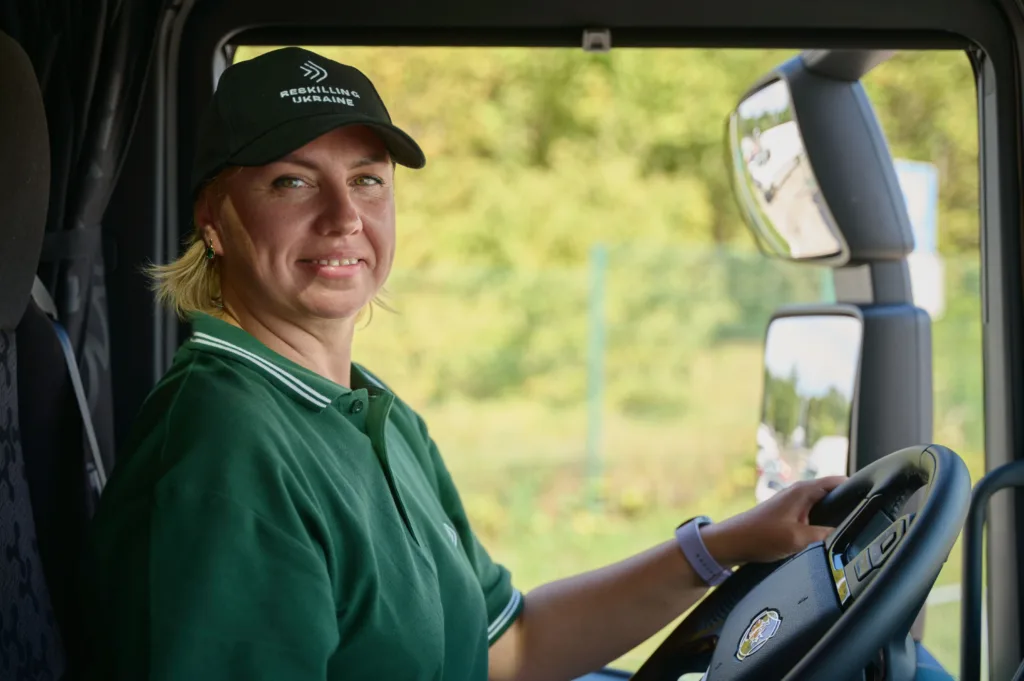At first glance, in 2025, it seems that it is not the right time to talk about gender equality in Ukraine. Some might say there is a war, daily shelling, and the threat of another Russian offensive. And then there’s the snow in April, low harvests and the coming food crisis. And some people will say, ‘What other rights do these women need?’ However, the situation with women’s rights and opportunities is not yet as rosy as we would like. At the World Economic Forum in 2023, it was estimated that we will have to wait at least 131 years to achieve gender equality around the world. In Europe, especially in the Scandinavian countries, it will happen faster – in 67 years. However, this is still a long time.
What about our country? In March, the Delegation of the European Union announced a new financial assistance package for Ukraine. More than €6 million of it will be used to support women and promote gender equality. So how does the war affect gender equality and what tools are available to make progress in this area?
Read also: ‘If it weren’t for the war, I would never have known how painful it is to lose your home,’ Maria Sulyalina, head of Almenda NGO
Working harder for the same money
One of the most sensitive gender issues is the pay gap between men and women in equivalent positions. It exists all over the world and in almost all industries and professions. According to the State Statistics Service of Ukraine, in 2023 it was 18.6%. This means that women have to work harder than men to get the same salary. Even if the gap seems small, over the years, these amounts accumulate and begin to have a significant impact on pensions. For example, the average pension gap between men and women in Europe is 35%. It depends on people’s work history, the positions they held and the salaries they received.
A 2020 study by the UN Recovery and Peacebuilding Programme found that almost 60 per cent of the Ukrainian population believes that there is a conditional division of professions by gender in our society. 38% of respondents believed that women should not strive to master traditionally ‘male’ professions.
As a rule, the proportion of women prevails in low-paid positions – among junior healthcare workers, teachers and educators, and in areas related to care work.
From school onwards, boys and girls are shaped by gender perceptions. Technical specialities and the exact sciences are traditionally considered ‘masculine’, while the humanities are considered ‘feminine’. That is why the share of women in humanitarian professions, such as journalism, is higher. However, women are much less represented in leadership positions. For example, while 70-80% of journalists and anchors may be women, which underscores the traditional perception of these professions as more ‘feminine,’ women make up 51% of top media executives.
Prohibited professions
Until 2017, there was a list of more than 450 professions prohibited for women in Ukraine. It included foundry work, work with lead, general ferrous and non-ferrous metallurgy professions, and professions in the transport sector. Many of them were hazardous to health. However, not all of them – for example, women were prohibited from driving buses, although they were allowed to drive trams and trolleybuses. The ban was cancelled on the recommendation of the CEDAW Committee, which deals with women’s rights within the UN mechanisms. The committee suggested improving working conditions, raising wages, and ensuring women’s right to choose their profession.

In the military sphere, until 2016, women could not officially hold combat positions involving higher risk and responsibility, such as snipers, artillerymen, and scouts. Although the war had been going on for two years at that time, many women soldiers performed these duties unofficially. However, they did not receive adequate social protection, equal salaries and assistance in case of injury. The Invisible Battalion initiative began to change this. In 2018, women were given access to all military specialities. Currently, more than 60,000 women serve in the Ukrainian army, of whom more than 5,000 are in the combat zone.
Retraining courses for women
The full-scale war has had a significant impact on the labour market. Due to the mobilisation of men, many sectors are experiencing a shortage of staff. In November last year, the government launched a project under which women can be trained for more than 30 traditionally ‘male’ professions at public expense (but not more than 10 subsistence minimums). For example, they can become tram, trolleybus, forklift drivers, milling operators, operators of computer-controlled machines, etc. In January 2025, the Ministry of Economy, together with Reskilling Ukraine, launched the OnTrack retraining programme for women, which offers training in truck and passenger transport. The Ministry of Economy believes that this will help businesses fill the shortage of male employees.
Currently, the Reskilling Ukraine website offers courses for car mechanics, excavator and loader operators, solar power plant installers, and truck/passenger transport/truck-trailer drivers. For example, a course for passenger bus drivers will allow you to obtain a category D licence and drive a bus with a capacity of more than 16 passengers. A graduate of the course will be able to work in urban, intercity and international transport. The theory is taught online, and the practice is taught offline in Kremenets, Ternopil region. Accommodation, meals and tuition are completely free of charge. In addition, from April to September 2025, there is an opportunity to study with children aged 6-12. A teacher-led day camp will be set up for them. So, in order to take the training, you only need to be a woman, have a B category driver’s licence and three free weeks to go to Kremenets – and you have a new profession in your pocket.

But there is a caveat. Reskilling Ukraine does not employ programme graduates. They say they ‘introduce them to different employers’. But employment remains on the participants’ shoulders and will depend on how willing passenger transport companies are to hire women.
Tools for companies
If training for women does manage to partially cover the shortage of men, employers will still have to make changes. To make women feel comfortable working, companies need to create additional conditions, such as automating processes that require physical strength, making children’s rooms, considering flexible work schedules, and ensuring that salaries are sufficient.
One of the tools for companies seeking to ensure gender equality and create an inclusive work environment is the WEPs Principles for the Empowerment of Women. These are seven principles developed by the UN based on labour standards and human rights. They include fair treatment of all employees, both women and men, ensuring their health and well-being, and supporting women’s training and professional development.
‘This is a guide to understanding and acting to achieve gender equality in the workplace,’ said Kristina Nechpai, Programme Analyst for Private Sector at UN Women Ukraine. “There are currently 44 WEPs signatories in Ukraine. Among them are Epicentre, DTEK, Ukrenergo, Suspilne, and Marie Claire. Before being accepted, an organisation usually undergoes a self-assessment, which helps to identify “weaknesses” – what still needs to be improved.”
However, Christina emphasises that WEPs principles do not work by themselves. “This is a long-term work that requires time and money. First of all, there must be a desire of the management and a corresponding message for employees. Sometimes companies sign the principles ‘for the sake of it’. Especially after high-profile gender scandals, when a company seeks to launder its reputation. Unfortunately, we cannot control this and force companies to actually do something for gender equality. We can only provide a tool and tell them why it is important.”
Kateryna Borozdina, head of the NGO La Strada, also believes that gender equality is a long way to go. “No, this is not a utopia. We can gradually come to gender equality. For example, through the development of gender-sensitive legislation. Not neutral, but sensitive, when the needs of both women and men are taken into account, and then opportunities for their implementation are created. I hope we will achieve this in a certain foreseeable time.”
So, progress in gender equality is a matter of time and constant effort. Especially in a world where even such a democratically ‘advanced’ country as the United States can be set back by the policies of a newly minted president. What can we say about Ukraine, which needs to work long and hard to improve gender equality? And it is likely that the fruits of this work will be seen by future generations.
Read also: ‘We are here to listen to you and work as equal partners’ — HLF teamlead Gritt Richter



